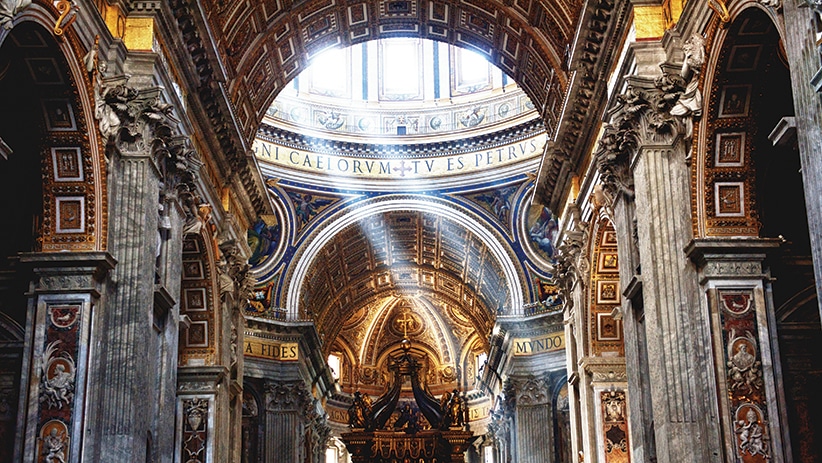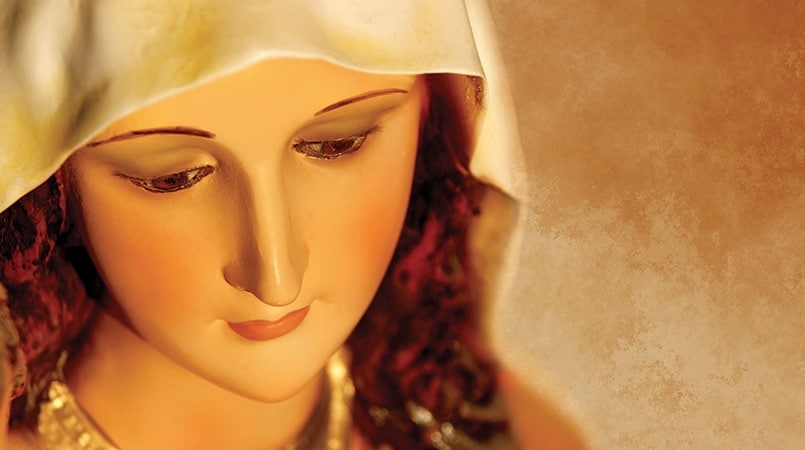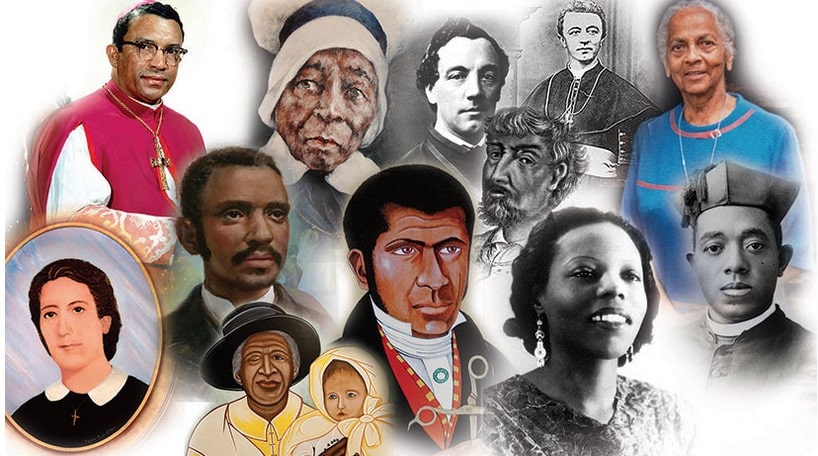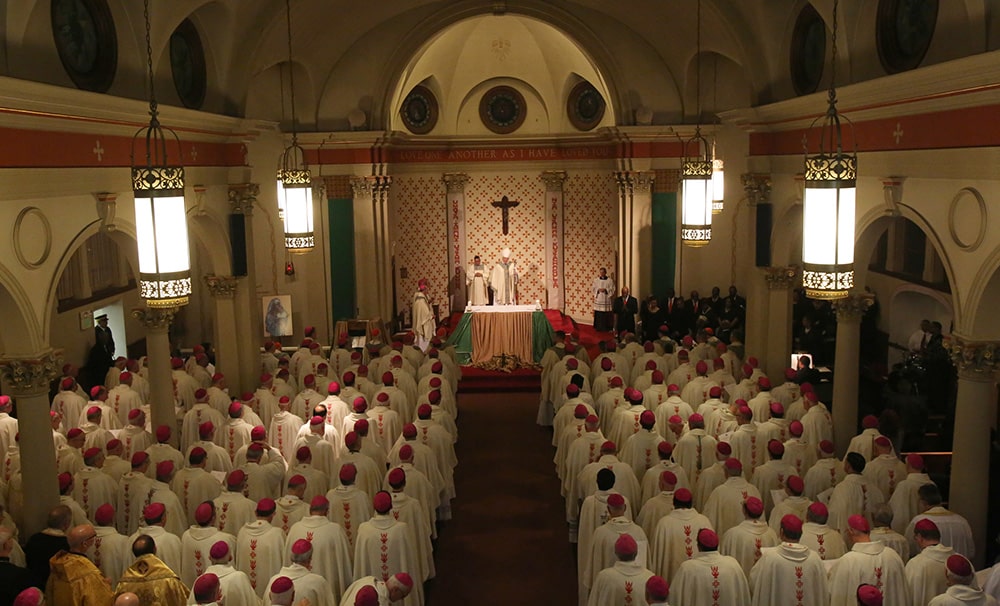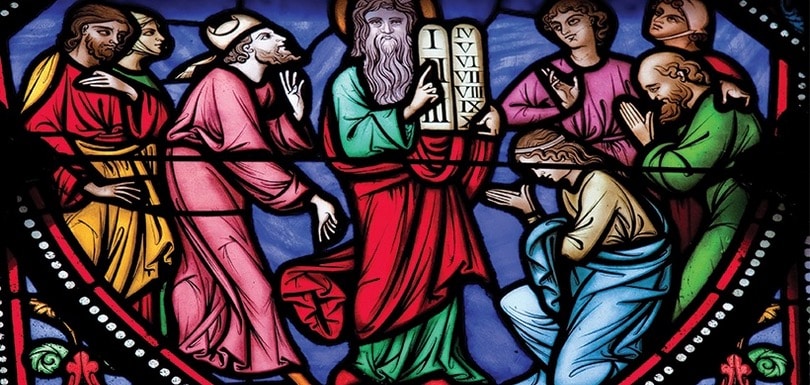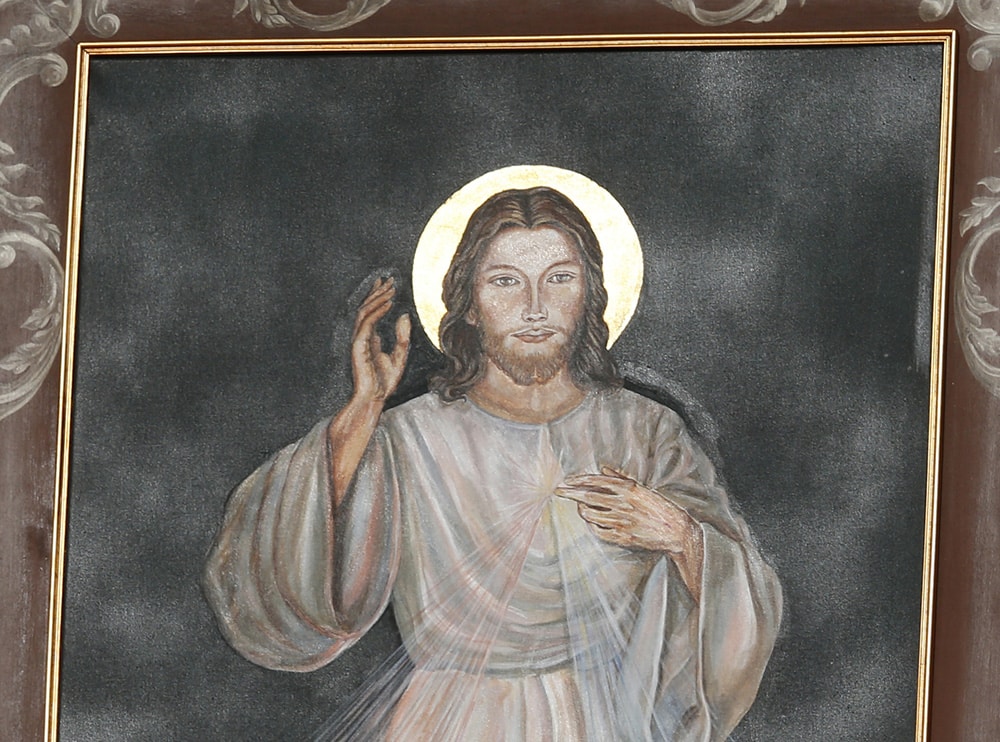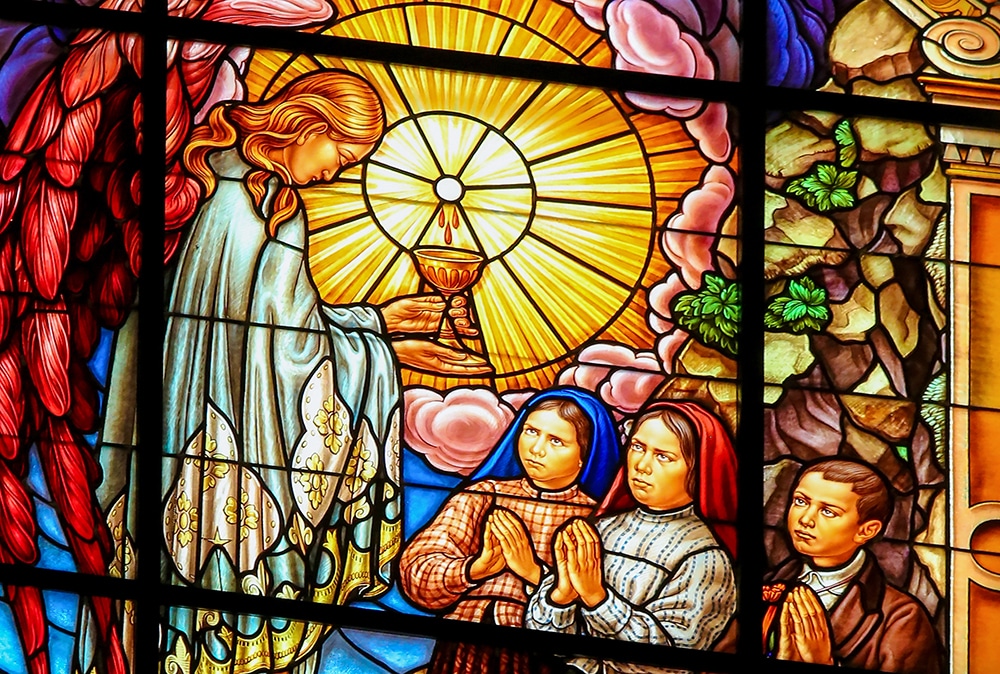A Catholic chaplain, a priest, was carrying Communion to patients who were bedridden in a hospital. The priest had a list of Catholic patients who had requested communion. In one of the rooms, as he blessed a patient and began to leave, the priest was passing by another patient, not on the list, who said, “Hey, what about me?”
The priest stopped and replied, “I’m so sorry; I didn’t realize you’re a Catholic.” The man in the bed said, “I’m not, but what does that matter? Religions are all the same.” So the priest said, “In that case, I’m happy to help you become a Catholic. We can start right now.” To which the man replied, “No, thank you.”
“All religions are the same.” The claim is widespread, but when pressed proponents have a difficult time substantiating the claim. Indeed, all one has to do is visit a temple, a mosque and a church to see how different religions celebrate their beliefs. One can also compare and contrast the various precepts of the religions to learn their differences.
So why do people still make the claim — even those who are practicing a particular religion? Ignorance may be part of the answer. Another part may be a desire to water down all faiths into a one-size-fits-all system that everyone can accept. It may even spring from a well-intentioned effort to alleviate conflict and fighting. The trouble is it doesn’t work; there’s fighting even among co-religionists.
The fact is: All religions are not the same. The challenge is to accept the fact without descending into triumphalism or hostility. A starting point that avoids such confrontations is acknowledging the dignity of the human person and his or her right to religious freedom. This is something the Catholic Church proposes (see Dignitatis Humanae, No. 2).
If people can respect each other as fellow human beings who deserve the same fundamental rights, then the next step is to move toward mutual understanding through dialogue. A spirit of openness and inquisitiveness about other faiths would be an important part of any meaningful conversation. However, the most important item to bring is a clear understanding of one’s own tradition, a prerequisite the Vatican commends strongly to all Catholics: “Above all they should know their own Church and be able to give an account of its teaching” (Directory for the Application of Principles and Norms on Ecumenism, No. 24).
Our Sunday Visitor is committed to being part of the conversation, and for more than 100 years has striven to provide readers with articles and commentary helpful to understanding the Catholic Church. A new In Focus series called “Foundations of the Faith” begins with this article, which will lay out what the Church claims about itself and how it is unique among religions. Then each month, from February to December, another article elucidating an essential aspect of Catholicism will be published. The idea is to offer a kind of refresher course on the Catholic faith. Catholics can and should speak openly and knowledgeably about their faith, and by doing so they may help to create a climate in which not only an informed conversation can take place, but also intolerance and ignorance can be avoided.
The Catholic Church: Its Basic Foundation
Jesus, during his earthly ministry and before ascending into heaven, instituted his Church upon the “rock” of Peter and the other apostles (see Mt 16:18; 18:18). This Church that Jesus founded subsists in the Catholic Church, according to Catholic teaching, and it still bears the four distinguishing marks that Jesus intended: namely that it is one, holy, catholic and apostolic. “This Church constituted and organized in the world as a society … is governed by the successor of Peter and by the bishops in communion with him …” (Lumen Gentium No. 8). The Catechism of the Catholic Church states further: “Only faith can recognize that the Church possesses these properties from her divine source. But their historical manifestations are signs that also speak clearly to human reason” (No. 812).
The differences between the Catholic Church and religions outside Christianity are obvious, for the latter do not believe Jesus is God. Within Christianity, the contrasts fall along a spectrum. Quite a few differences stem from both a rejection of the papal office and a disagreement over holy orders. The differences here are very stark. On the other hand, some branches of Christianity, like the Orthodox (which also claims a direct link to apostolic times) are so close that full unity is in reach. Nevertheless, in order to give an account of their own tradition, Catholics need to understand each of the four marks. Taken together they form a foundation for the entire Catholic faith.
The Church is one
Claiming that the Catholic Church is one may seem naïve at best and triumphalist at worst. Given the differences within Christianity already mentioned and considering the Great Schism of 1054 and the Protestant Reformation in the 16th century, how can unity be claimed? It depends on the source of unity. If one keeps in mind the divine origin of the Catholic Church, then its unity can be appreciated even when individual Catholics obscure it by error and sin or when people choose to leave the Church.
The German bishops make a good point in “The Church’s Confession of Faith: A Catholic Catechism for Adults”: Unity, they say, is “not a goal of Church organization” (No. 231). It is not something that can be manufactured by human beings. The unity of the Church “is already a reality in Christ as a first fruit of the Holy Spirit” (No. 231; see also Lumen Gentium, No. 7). Therefore, unity is a gift that must be received and lived by the members of the Church, who, as St. Paul tells us, are called to be one with their head (Col 1:18).
| Caution About the ‘One’ Church |
|---|
|
Two notes of caution about the unity of the Church should be kept in mind. First, unity does not preclude diversity. As the Catechism states: “Among the Church’s members, there are different gifts, offices, conditions and ways of life” (No. 814). This includes even the way Mass is celebrated. Most people are familiar with the Latin, or Western, rite of the Catholic Church, which includes most U.S. Catholic parishes. But there is an Eastern part, which includes 21 churches that celebrate Mass according to their own traditions. Together the Western and Eastern churches make up the one, holy, catholic and apostolic Church. A second note of caution concerns Christians outside the Catholic Church. Ruptures to the “unity of Christ’s body” (CCC, No. 817) were caused by human sin on both sides of every divide. Yet, “one cannot charge with the sin of the separation those who at present are born into these communities [that resulted from such separation]” (CCC, No. 818). The Catholic Church accepts other Christians as brothers and sisters, and it recognizes in their communities “elements of sanctification and truth” (CCC, No. 819). Moreover, the Catholic Church is committed to continual conversion on its part and to responding to Jesus’ prayer that all be one in him (Jn 17:20-23).
|
If one chooses to participate, then he or she will join in the “visible bonds of communion” that Jesus provided (CCC, No. 815):
— “Profession of one faith received from the apostles.”
— “Common celebration of divine worship, especially the sacraments.”
— “Apostolic succession through the Sacrament of Holy Orders.”
Participation in these bonds, needless to say, cannot be pro forma. They amount to nothing unless love “binds them together in perfect harmony” (CCC, No. 815).
The Church is holy
The claim of the Church to be holy may seem false taken at face value. But, again, one has to consider the source to appreciate how the Church is holy. If the Church’s holiness depended on its human members, then it would have succumbed to evil long ago. Clearly, individual members and even groups within the Church can be sinful. They may even be actively opposed to holiness. The eruption of scandals throughout the history of the Church, even in the present time, is proof enough. Yet the scandals operate ipso facto against the Church’s intrinsic holiness.
| Key Differences in Major Religions |
|---|
|
Core beliefs
Catholics and all other Christians believe in one God, “the Father and the Son and the Holy Spirit; three persons indeed, but one essence, substance or nature entirely simple” (Catechism of the Catholic Church, No. 202). Buddhists have no set conception of a divine being, although Siddhartha Gautama (Buddhism’s founder) did speak of gods. Hindus have a complex idea of divinity involving a divine principle, Brahman, that is manifested by three forms: Vishnu, Shiva, and Brahma. Jews and Muslims are closest to Christianity in that both believe in the one and only God of Abraham. However, they do not accept the Trinity.
Rites and ceremonies
Buddhists around the world tend to celebrate both the new year and Buddha’s birthday. However, the time and manner of celebrations are closely tied to the country and even local area. Hindus have a ritual called the Vedic sacrifice in which the offering (usually vegetables and grains) is made to appease the gods and bring order to the world. The Jewish rites include the rite of circumcision for boys (girls are named in a synagogue ceremony on a Sabbath morning within 30 days of their birth) and keeping a complex system of laws, including the dietary laws. Like Judaism, Islam has a circumcision rite for boys and dietary regulations. Muslims tend to celebrate the transitions in life like marriage and death. Afterlife Regarding the afterlife, Buddhism does not have a single vision. Hindus believe that human beings are reborn over and over again. Muslims believe in a day of judgement, as well as heaven and hell. Jewish belief depends on which part of Judaism is under consideration, reminiscent of the debate between the Saduccees and Pharisees, the former rejecting resurrection and the latter accepting. Generally speaking, there is acceptance of some kind of afterlife.
|
The Lord says, “Be holy because I am holy” (1 Pt 1:16; cf. Lv 11:44, 19:2). We are to reject sin and to live by God’s words. So Christ, when he brought the Church into being, did not mean for its members to exist apart from him. On the contrary, the whole point of the Church is to provide a way that people might be united to Jesus and share in all his gifts (cf. 1 Pt 1:13-16). Jesus bestowed the Spirit upon the Church and communicates divine grace through the sacraments. Moreover, the Church has reminded its members that God “does not make men holy and save them merely as individuals, without bond or link between one another. Rather has it pleased him to bring men together as one people, a people which acknowledges him in truth and serves him in holiness” (Lumen Gentium, No. 9). The key is to remain in Christ, the source of holiness.
If living a holy life seems impossible to an individual member, then the Church must support that person and remind him or her what Jesus says: “For human beings this is impossible, but for God all things are possible” (Mt 19:26). It’s also good to keep in mind models of the faith, the saints, who persevered in holiness because they never gave in to sin and continued to follow Christ. The saints bring to life the words of Jesus: “I am the vine, you are the branches. Whoever remains in me and I in him will bear much fruit, because without me you can do nothing” (Jn 15:5).
The Church is Catholic
The third essential characteristic of the Church has become part of its name: catholic, meaning universal. Many people may have heard or read another title: the Roman Catholic Church. However, official Church documents never use “Roman” because it can obscure the universal nature of the Church. Jesus sent the apostles to the whole world (cf. Mt 28:19-20) so that every person might be offered the fruits of his salvation.
That’s why the Church goes to every land and exists among every people. The Church is even willing to adopt local customs as long as they are good and complement the truth of the Gospel of Christ (cf. Lumen Gentium, No. 13).
The universality of the Church is enhanced by its presence in so many localities and by existing within so many political systems across the globe. Every diocese, or local Church, makes present the one Catholic Church in its particular place. For instance, just as Paul could write to the “church of God that is in Corinth” (1 Cor 1:2), a person today can write to the “church at Fort Wayne, Indiana,” or the “church at Paris.” There are also the Eastern rite churches, which bring the variety of their liturgical traditions to the Catholic Church. The fathers at Vatican II were very proud of this richness: The “variety of local churches with one common aspiration is splendid evidence of the catholicity of the undivided Church” (Lumen Gentium, No. 23).
The Church is Apostolic
Closely connected to the catholicity of the Church is its apostolic character. Here again one can find people who charge the Church with dissimulation, stating that whatever the Church calls its leaders, it cannot call them apostles. This is true in one sense: The Twelve Apostles chosen by Christ during his earthly ministry, and who received from Christ the great commission to spread the Gospel, are unique. However, the Twelve soon realized that Jesus’ promised return was not going to be as quick as they originally thought. Indeed, the Second Coming might happen after their deaths, so they returned to Jesus’ words in order to discern how they could fulfill the mission he gave them.
| Two Ways the Church is Apostolic |
|---|
|
1. Just as the Twelve were given their mission as a body with Peter as the leader, the bishops form a college with the pope as head. As the pope serves his brother bishops as a leader among equals, he shares with them the primary mission of preaching the gospel of Christ. 2. The whole Church is apostolic in so much as both people and ministers are united in Christ and share in the same mission to make Christ and his kingdom known and available to all.
|
Jesus promised to be with the Church until the end of time through the Holy Spirit, whom the apostles received in a special way at Pentecost. Through prayer the apostles discerned that they were to choose successors to carry the Gospel to the end of time. These successors, who are called bishops today, are not the apostles and they do not claim to be so. What they do claim is to be in the line of apostolic succession that was initiated by the apostles through the laying on of hands. This line of succession is what binds the bishops to hand on the Faith they have received, to guard it and protect it, and to prohibit any innovations obnoxious to it.
Conclusion
While other Christian denominations celebrate some of the sacraments, revere sacred Scripture and have many holy people within their ranks, only the Catholic Church has all the elements Jesus intended.
| The Salvation of All |
|---|
|
Lumen Gentium (No. 16) teaches that the Lord wills that all be saved. The gift is there; people need to receive it. If there is a person who is invincibly ignorant of God’s existence and will — i.e., there is no culpability involved — then that person can be saved as long as he or she strives “to live a good life” according to God’s grace, which is bestowed upon all. “Those also can attain to salvation who, through no fault of their own, do not know the Gospel of Christ or his Church, yet sincerely seek God and, moved by grace, strive by their deeds to do his will as it is known to them through the dictates of conscience. Nor does divine providence deny the help necessary for salvation to those who, without blame on their part, have not yet arrived at an explicit knowledge of God and with his grace strive to live a good life. Whatever good or truth is found amongst them is looked upon by the Church as a preparation for the Gospel. The Church knows that it is given by him who enlightens all men so that they may finally have life. But often men, deceived by the Evil One, have become vain in their reasonings and have exchanged the truth of God for a lie, serving the creature rather than the Creator. Or some there are who, living and dying in this world without God, are exposed to final despair. Wherefore to promote the glory of God and procure the salvation of all of these, and mindful of the command of the Lord, ‘Preach the Gospel to every creature,’ the Church fosters the missions with care and attention.”
|
This is the one Church of Christ which in the creed is professed as one, holy, catholic and apostolic, which our Saviour, after his resurrection, commissioned Peter to shepherd, and him and the other apostles to extend and direct with authority, which he erected for all ages as “the pillar and mainstay of the truth.” This Church, constituted and organized in the world as a society, subsists in the Catholic Church, which is governed by the successor of Peter and by the bishops in communion with him, although many elements of sanctification and of truth are found outside of its visible structure. These elements, as gifts belonging to the Church of Christ, are forces impelling toward catholic unity (Lumen Gentium, No. 8).
This teaching is important for two serious reasons apart from how it distinguishes the Catholic Church from other denominations and religions. First, it grounds the teaching and practices of the Catholic Church in the authority of Christ. Second, it warns the Catholic Church never to take for granted its divine gifts, but to work tirelessly to share them with all.
Nihil Obstat: Msgr. Michael Heintz, Censor Librorum

